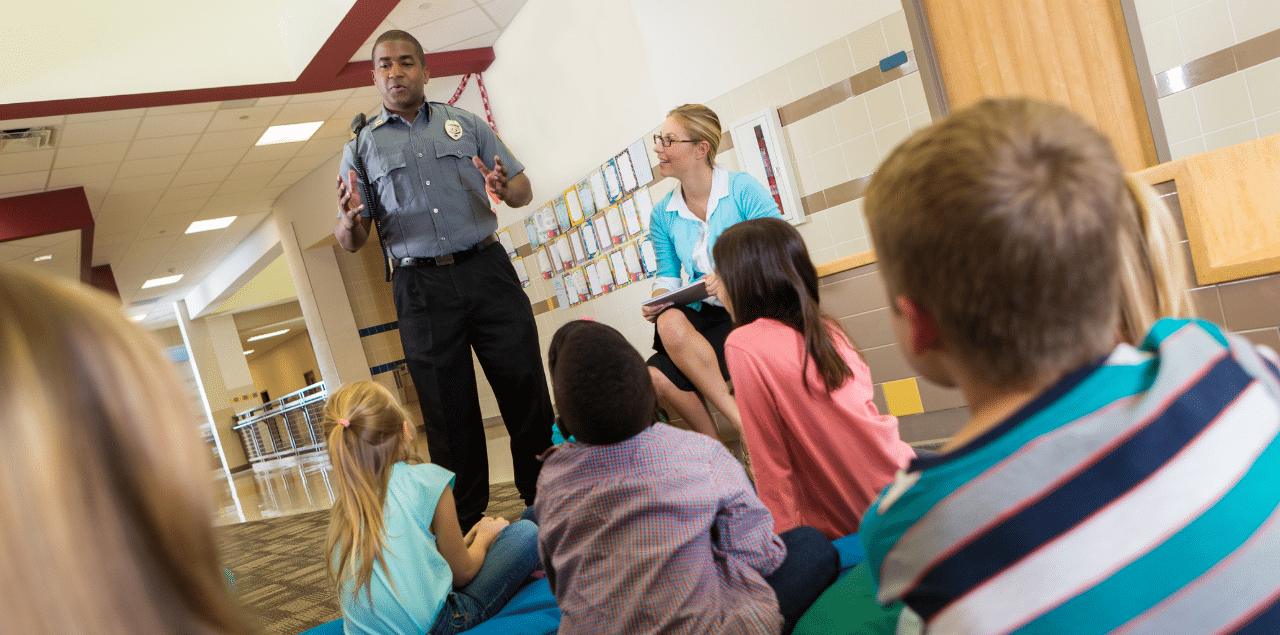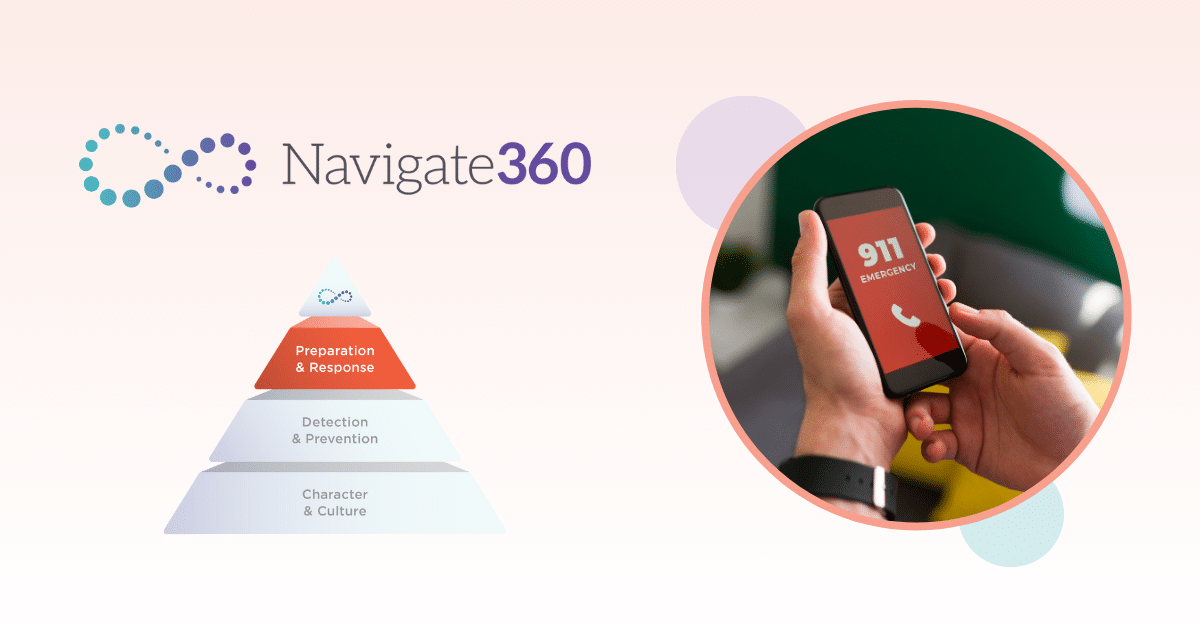There’s nothing more important than creating a safe and healthy learning environment in schools, and that includes ensuring students, educators, and staff are prepared to handle a potential active shooter threat. While a lockdown-only approach has been the go-to practice for many years, all federal and state agencies—from the U.S. Department of Homeland Security to the U.S. Department of Education— recommend practices that utilize a multi-option response, as reported by the Journal of School Violence. The emerging research on the harmful impact of traumatic events makes it necessary to rethink past approaches and incorporate trauma-informed practices to support vulnerable students as much as possible.
Trauma occurs as a result of an emotionally harmful situation, such as violence, abuse, neglect, or loss. It can happen to anyone, regardless of their age, gender, socioeconomic status, race, ethnicity, or sexual orientation. And it’s prevalent in our schools: According to the National Child Traumatic Stress Network, one in four children has been exposed to trauma that may affect their behavior. As such, it’s crucial that active threat response training utilizes a trauma-informed approach to maintain a school environment that meets students’ physical, emotional, and social safety needs.
What Is a Trauma-Informed Approach to Active Shooter Threat Response Training?
A trauma-informed approach is guided by the concept of the “Four R’s.” This stands for:
- Realize – Educators must have a basic understanding of what trauma is and how it affects the physical, emotional, and mental health of students. This includes coping strategies, behavioral problems, learning difficulties, and more.
- Recognize – Educators should be able to recognize the signs of trauma. For example, students may be physically or verbally aggressive, have regular absences or tardiness, fall asleep in class often, or seem alienated from their peers.
- Respond – Educators should apply a trauma-informed approach when responding to students. From the language that is used to the policies that are implemented, all of it should follow a model of utilizing evidence-based trauma practices to promote a physically and psychologically safe environment.
- Resist re-traumatization – Active shooter drills may inadvertently create stressful environments that may re-traumatize students. Resist re-traumatization during active shooter safety drills with open discussion and debriefing when necessary.
Implementing the “Four Rs” can help schools develop trauma-informed practices that seek to provide a culture of physical, social, and emotional safety for all students. In doing so, educators can focus less on “What’s wrong with this student?” and more on “What happened to my student and how can I help them?”
Trauma-Informed Practices in Safety Training
Safety training can be a traumatizing experience for some students. Think about how it might affect a student who has experienced abuse or violence or one who has left a war-torn country. Safety training, especially active threat response training, asks people to imagine being in a scenario that could be upsetting in myriad ways—from the scenario itself to the steps taken to get to safety. Trauma-informed safety training understands that, while these preparation exercises are essential, they need to be approached differently.
Recommended considerations:
- Always announce active shooter drills – Students, parents, and staff should always have advance notice of the training to adequately prepare.
- Reduce the length and dramatization of simulations – Avoid using highly dramatized intruders, weapons, and simulated gunshots or sirens during the safety training.
- Discuss the training with students afterward – Schools should allow time for students and educators to discuss the training and process what happened in a healthy way.
- Provide age-appropriate safety training – Safety training for a kindergartener should look much different than for a high schooler. Meet students where they are and provide age-appropriate training they can understand.
- Utilize calming strategies – Adults should know how to remain calm during safety training, as students will follow their lead. They should understand specific calming strategies to implement for students who they see struggling during the training.
- Offer alternative means of learning – To avoid re-traumatizing students, offer an alternative method of safety training (books, individual/small group walkthroughs, classroom exercises, etc.) for students who may be especially vulnerable to these stressors.
ALICE Training®: A Trauma-Informed Approach to Active Shooter Threat Response Training
ALICE Training®, a solution of Navigate360, is the No. 1 active shooter preparedness solution for organizations, used by more than 5,500 school districts. This multi-option active threat response training understands that critical situations are fluid, and as such, one approach does not fit all. Instead, students should be trained to understand the different response options available to them based on the incident at hand and their proximity to danger. These options include lockdown, counter, and evacuate while understanding the communication and acceptance of information during the incident: alert and inform.
With a blended approach—an eLearning system combined with on-site group training from an ALICE Certified Instructor—that offers specific modules for different age groups, ALICE empowers students to respond proactively to unsafe situations. Starting at the preschool level with a coloring book that introduces the general concept of danger in an approachable, age-appropriate way and continuing to the high school level where the training includes critical thinking drills to encourage students to become part of the solution, ALICE delivers options-based training for students of all ages.
The basis of ALICE Training® is to help students understand how to proactively respond to violent situations without re-traumatizing them. It utilizes a trauma-informed approach by:
- Employing curricula that meets the diverse cognitive, behavioral, and developmental needs of students
- Offering resources for students who may have special considerations and need an alternate safety training option
- Using multi-option response training that empowers students to participate in their survival reducing anxiety and building confidence
Conclusion
The importance of safety training in schools cannot be overstated—and neither can the importance of utilizing trauma-informed practices when doing so. One in four students in every classroom is dealing with trauma in some way, and it’s crucial to meet these students where they are. ALICE Training® aligns with the Department of Education’s standards and uses the same strategies adopted by many federal and governmental agencies. To learn more about ALICE Training® and the benefits of our trauma-informed, multi-option active shooter response training, contact us today.




